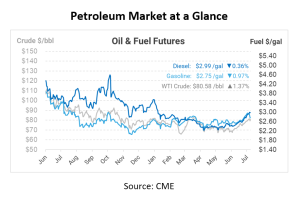
The Cost of an Invoice: How much are you spending?
When you’re buying fuel, the process of receiving and paying invoices can trigger a complex series of steps within accounts payable teams. Unfortunately, for many businesses, this procedure can be slow, error-prone, and a source of hidden costs. Do you know the cost of an invoice?
Having an automated system can make a significant difference, especially for companies purchasing high amounts of fuel and other petroleum products every day. Dealing with different invoices coming by mail or email requires more employees to handle all that paperwork, which can cost a lot in labor hours and also can lead to errors in processing.
In today’s article, we will discuss some of the most common processing challenges faced by companies and explore how working with partners offering automated invoicing systems can improve their payments workflow.
The Cost of Processing an Invoice
High costs stand as one of the primary challenges in invoice processing, significantly affecting a business’s operations. A common estimate is that an invoice takes 30 minutes of time to process – which includes sorting the incoming invoice, inputting it into your account platform or ERP, validating the cost, matching the PO, and arranging payment. With fuel, where invoices can be tens of thousands of dollars each and the contracted price changes daily, you may be spending even more time processing invoices. Estimates on the total cost of manual processing range from $15-$40.
If you’re buying fuel at dozens or hundreds of locations and receiving multiple deliveries a week, you could be processing tens of thousands of fuel invoices. If you take the mid-point of that range, you could be spending $250,000 or more on processing invoices – or more!
The cost of an invoice contains various factors, including labor, technology, infrastructure, reconciliations, and more. Manual invoice processing involves multiple manual touchpoints, such as data entry, verification, approval routing, and payment processing. These tasks can be time-consuming and prone to error, leading to inefficiencies and increased costs.
Add on top of this the cost of truly gaining transparency into those fuel invoices. Does your business record data separated into fuel cost, freight, and taxes? Do you know how many gallons you bought? Many businesses are sitting on all this data, but don’t have a way to easily access or report on trends in the data.
Unlocking AP Efficiencies
There are better ways to buy fuel. Consider these three steps for unlocking a faster and lower-cost business process:
- Consolidate invoices. Check with your fuel supplier to see if you can consolidate multiple fuel invoices into a single weekly statement invoice. By doing this, you can reduce your number of invoices from hundreds or thousands down to just 52 invoices. Of course, if you’re managing dozens of different fuel partners, it may be helpful to consolidate to further reduce the number of invoices.
- Integrate Your Transactions. Integrating fuel purchases directly into your ERP or Accounting system can save your business time and effort, eliminating the steps of gathering disparate invoices and entering them into a system. If your fuel vendor also offers invoice validation, this can save even more time, turning the daily routine of inspecting each invoice into a periodic audit of a representative sample.
- Gather Additional Reporting. Talk to your fuel vendor about their ability to provide additional fuel invoice reporting, such as statement details, transaction reports, and tax reporting. These direct reports can help give your processing departments more insights even if your ERP or Accounting system doesn’t provide the exact report needed.
Mansfield offers a variety of fuel data management solutions, including statement invoicing, ERP integrations, and online reporting in FuelNet. FuelNet is Mansfield’s fuel management platform that provides operational and financial visibility to improve fuel management. FuelNet offers comprehensive features designed to enhance fuel management and streamline processes.
With FuelNet, customers can access a customizable dashboard that can be configured for specific locations or enterprise-wide. The portal provides transactional analytics, allowing companies to gain insights that simplify the supply chain and reduce costs. FuelNet also offers delivery metrics, ensuring transparency and holding vendors accountable.
Let’s bid farewell to the age of manual processes and embrace the future of streamlined invoices and integrated fuel management systems. By partnering with dependable suppliers offering modern automation solutions, you can save money, improve accuracy, and propel your operations to new heights.
The journey of an invoice should be a smooth and efficient one – let’s make it happen. Contact Mansfield Today!

This article is part of Daily Market News & Insights
Tagged:
MARKET CONDITION REPORT - DISCLAIMER
The information contained herein is derived from sources believed to be reliable; however, this information is not guaranteed as to its accuracy or completeness. Furthermore, no responsibility is assumed for use of this material and no express or implied warranties or guarantees are made. This material and any view or comment expressed herein are provided for informational purposes only and should not be construed in any way as an inducement or recommendation to buy or sell products, commodity futures or options contracts.





